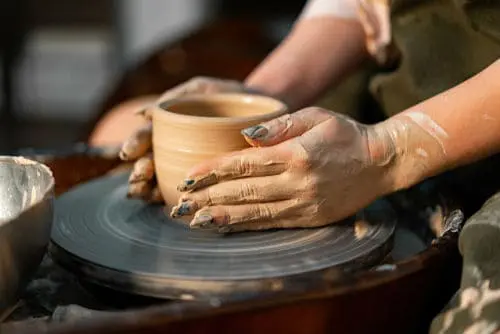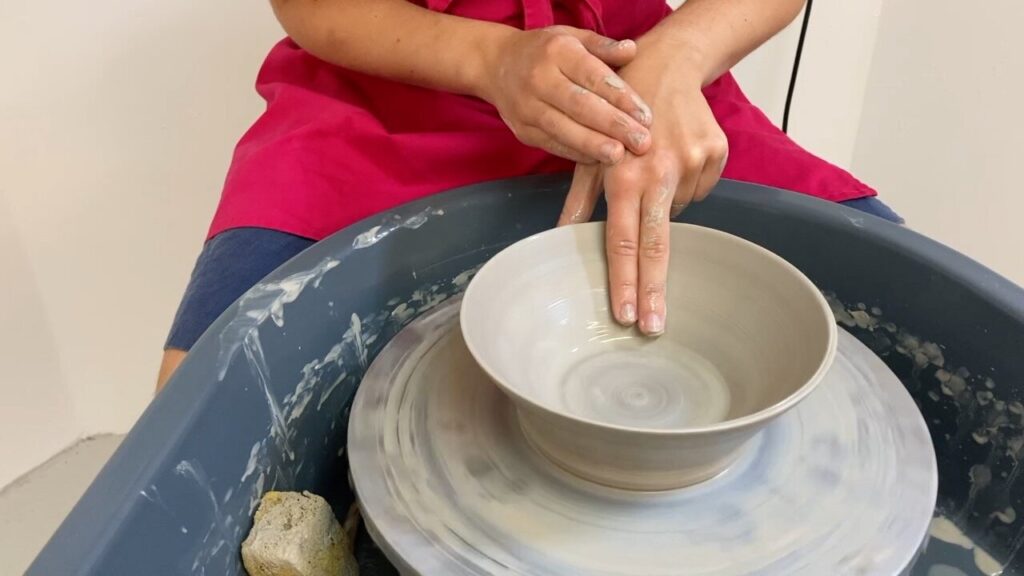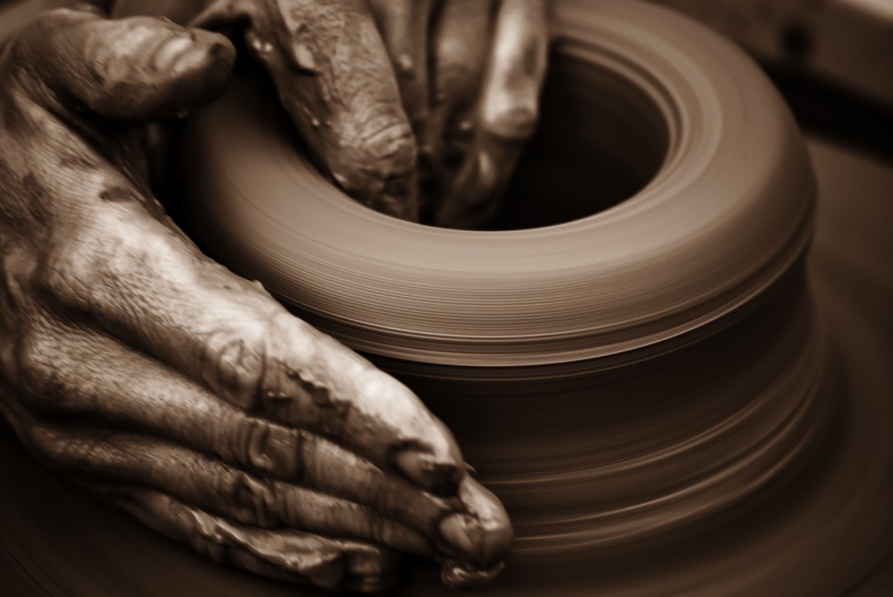How to do pottery with long nails
One of those timeless, classic crafts that people of all ability levels can enjoy is making pottery. However, it can be challenging if you have long natural or acrylic nails that you don’t want to chop off. So how can you enjoy the craft of making pottery and relax while doing it if your nails are always leaving their mark on the clay?
Using long nails to create ceramics is easier than you may imagine. Using a few straightforward techniques, you may get the outcomes you want. A few particular tools can help you in this regard. Long nails and clay can sometimes produce original works of art.
Ceramic creation can be more challenging than it normally would be if you have long nails, but it is still feasible. Before you find the best strategy for you, you might need to try this and other strategies. You might even find that your favorite strategy combines these techniques.
Can you do pottery with long nails?
Creating beautiful objects with your hands and fingers is a large part of the art of pottery. Unfortunately, it seems like working with ceramics can be ruined by long nails
If you’ve never done it before, you might find it a little challenging at first. Knowing all of the necessary techniques would be ideal. If you don’t find one that works, try a few different strategies. You could use a mix of strategies to achieve your goals.
These techniques will be useful to you whether you enjoy making ceramics or have long nails. Pottery with long nails won’t be difficult if you get the hang of it.

HOW TO DO POTTERY WITH LONG NAILS: 5 EASY TIPS
- GUARD THE CLAY BY USING A SPONGE
You may first cover your nails’ harsh, jagged edges with a sponge to prevent them from scratching or carving into the clay. This method is effective whether you are hand-building or using a wheel to throw your ceramics. You’ll need water and one or two sponges.
Apply the sponge to the clay after gently ringing out the excess water from the sponge. You can hold the sponge in your non-dominant hand and form the object with the soft pads of your dominant hand while molding the clay into the desired shape.
If you want to prevent accidentally scratching the clay with your nails, you can place the sponge over the tips of your nails. You can cover the tips of your nails with a sponge to prevent them from unintentionally damaging the clay. After that, finish sculpting the clay into the appropriate shape using the Finishing Sponge.
It takes some practice to get the hang of this method, but it becomes much simpler to use once you discover the sponge’s ideal fit in your hand. The light pressure of one finger can mark clay, but it is much more difficult to create precise lines and shapes with nails.
The sponge on a stick might help you get the shape you want if you’re using a wheel. If the sponge method is not for you or if you want to try some other techniques, keep reading to learn four alternative tips for molding clay with long nails.
- When handling pottery, ALWAYS WEAR RUBBER GLOVES
A simple and well-liked method of retaining long nails is working with clay while wearing gloves. Most potters wear gloves while they work, despite having short nails. Some contend that wearing gloves makes it difficult to feel the clay, which hinders artistry.
About cotton gloves, this is somewhat true. With the help of some thin rubber gloves, you can handle the clay as-is.
Gloves made of vinyl and nitrile make working with clay simple. Since they are light, you won’t feel like you’re wearing gloves. Apply lotion to your hands before putting on the gloves. It will stop the drying out of your hands. Ensure that the gloves you purchase fit your hands. Your long, pointed nails will rip through your small, tight gloves. If your glove is too loose, the lines it makes on your clay might be strange.
Using nitrile gloves makes it easy to complete difficult ceramic projects. They are disposable and fit snugly. Make sure there is adequate space in your gloves for your long nails. Your fingertips won’t damage the glove as a result.

- MOLD THE CLAY USING YOUR FINGERTIPS’ PADS.
Before utilizing your long nails as pottery tools, I recommend filing down the edges to prevent them from being sharp and pointed. The longer your nails are, the more likely you are to break your clay sculpture. After you’ve filed them down, you can shape the clay with the pads of your fingertips.
Maintaining continual focus on your hands is necessary for this procedure. Your focus should be on using your thumb, pointer, and middle fingers most of the time. This is because these fingers have the most control while manipulating clay.
The clay can also be molded using finger pads on the running wheel. Just be careful not to let your nails touch the clay.
Be very careful when molding clay with your hands if you have long nails because even a tiny unintentional touch might leave an unattractive mark of line.
To exert enough pressure on the clay to shape it, you can try to spread your fingers slightly upward.
- USE YOUR KNUCKLES TO MOLD THE CLAY
With your thumb, pointer, and middle fingers, you must use this technique to work the clay in this area. Fold these fingers in, showing your knuckles. Despite having small nails, a lot of potters employ this technique.
Instead of using the pads of your fingertips, mold the clay using your knuckles. You can only manipulate a little portion of the clay with your fingertips. Knuckles can exert a good amount of pressure on the surface.
The clay won’t be able to see your nails if you cover them with your knuckles. You can avoid having your nails pose a barrier in this way. The procedure can be sped up more effectively by using your knuckles. How to pull clay using your knuckles is demonstrated in this video.
- IF POSSIBLE, USE TOOLS RATHER THAN YOUR HANDS
The best way to work with clay while retaining long fingernails is occasionally to use tools rather than your hands.
You may make beautiful pottery with a variety of tools, some of which are given below:
-Ribs made of metal and plastic
-Modeling tools: Wooden Ribs
-a wooden ball stylus
-Stylus made of metal.
Clay may be easily compressed and smoothed with metal, plastic, and wooden ribs. When you are throwing clay on the wheel, ribs work best. After that, smooth, stretch and shape your clay with the wooden tool inside your creation. The greatest ribs for your cylinder’s outside are metal or plastic.
The ribs made of metal and plastic work great for slab work. Compression and making sure there are no creases or fissures in the clay.
For artists who have long nails, modeling tools are fantastic. Texture creation with modeling tools is fantastic. These function as a substitute for your fingers and nails to draw patterns, lines, and anything else you desire on your clay piece.
Tools can be a great resource even if you don’t have long nails for making pottery. When utilizing tools, your nails are unattached and not at risk of breaking or perhaps damaging your artwork.
For keeping your ceramics and nails clean, use a shammy towel. You can use a shammy towel, less porous than the sponge I mentioned earlier but similar nonetheless. Using a Shammy Towel is beneficial for molding clay, whether utilizing a slab-building method or the wheel.
If you’re new to pottery making, many of these tools and methods take time and practice to master. To find the best approach, take your time and test a few different ones.
It cannot be easy to adjust to having long nails as you work, even if you’re an experienced potter. Adapt to your lengthy nails by keeping in mind that you can. All it needs is time.

What negative effects might long nails have on pottery making?
Take into account these two ideas. A few questions should be asked of yourself before you begin working with long nails on ceramics.
Are you working with clay and want to keep your long nails safe? It’s also possible to concentrate on shielding the pottery from your lengthy nails. The information above discussed how to create ceramics with long nails. On the other hand, we didn’t talk about the possible consequences of working with clay on your wonderful, gleaming, long natural nails.
There is a big chance that your long nails will grow out and lose their shiny, magnificent appearance if you deal with ceramics while wearing long nails and without using gloves. Additionally, a lot of clay is present in your long nails. The beauty of your nails could be ruined if they develop unattractive scratch marks. Additionally, the clay you touch could turn the exquisite pink color of your natural nails into an unpleasant tint.
Can you sculpt with long nails?
The practice of molding clay into three-dimensional works of art is known as clay sculpting. It demands a creative touch and eye. Employing long nails to make original works can be a blessing.
The form of your nails gives you more artistic control. Your work becomes more creative and outstanding. Long nails are ideal for making precise cuts and lines in your artwork.
Your nails will be smoothed out if you fill in the tips. As a result, the clay won’t probably be scratched by your nails. To become comfortable with the sculpting tools, practice frequently.

How to Take Care of Your Hands After Making Clay?
Although Crafting Clay is fantastic, it does dry out your hands, which might be a problem if you have sensitive skin. It’s essential to clean your nails with a stiff-bristled brush after working with clay, giving close attention to the space immediately beneath your nails. By doing this, clay that has become lodged around your nails will be loosened.
After washing your hands and removing the clay from under your nails, moisturize your hands thoroughly with a product like Vaseline or Aquaphor. Over drying will be less likely as a result. If you have cuticle oil, apply it to the heal beds to protect your real or artificial nails.
To have soft hands the next day, follow the instructions for applying your cuticle oil and heavy moisturiser. The following day, put on cotton or spa gloves. The dawn will be kind to your hands.
Should you wear rings while working with pottery?
It is something else to consider if you wear rings. I suggest removing all jewelry before working with clay, especially if you plan to throw it on a wheel. Although it is not against the law to wear jewelry when creating ceramics, I think it is inconvenient, especially if you already use your long nails to push through barriers.
Additionally, rings could create impressions on your creations that you don’t want them to have, or they might get buried in the clay. Make sure to thoroughly clean your rings when you’re done if you choose to wear them while working with clay or if you forget that you’re wearing them.
The clay can eventually cause damage to your rings. Taking off rings before you begin to protect your pricey or prized personal goods is preferable.
Summing up
Traditional art forms like pottery still inspire people’s imaginations today. If you’re worried that your long natural or acrylic nails may make it harder for you to create ceramics, try any of the earlier tips and tricks.
I would advise you to get used to having long nails and make the most of them by creating one-of-a-kind ceramics before cutting them. Read articles What To Wear When Doing Pottery for more information on the proper attire as you continue to create your beautiful pottery.

Being associated with art and craft field since decades as a hobbyist and life long learner has given me an opportunity to learn many new things related to art, craft, paints and pottery which i am trying to share with your guys on this website. I have expertise of being professional painter and potter for the last 20+ years
I have learned mind blowing cool tips and insights which makes me a person with ability to improvise and come up with creative ideas and solutions to make stunning and impeccable art pieces of all types which are adored by people across the globe on this website and other platform.


